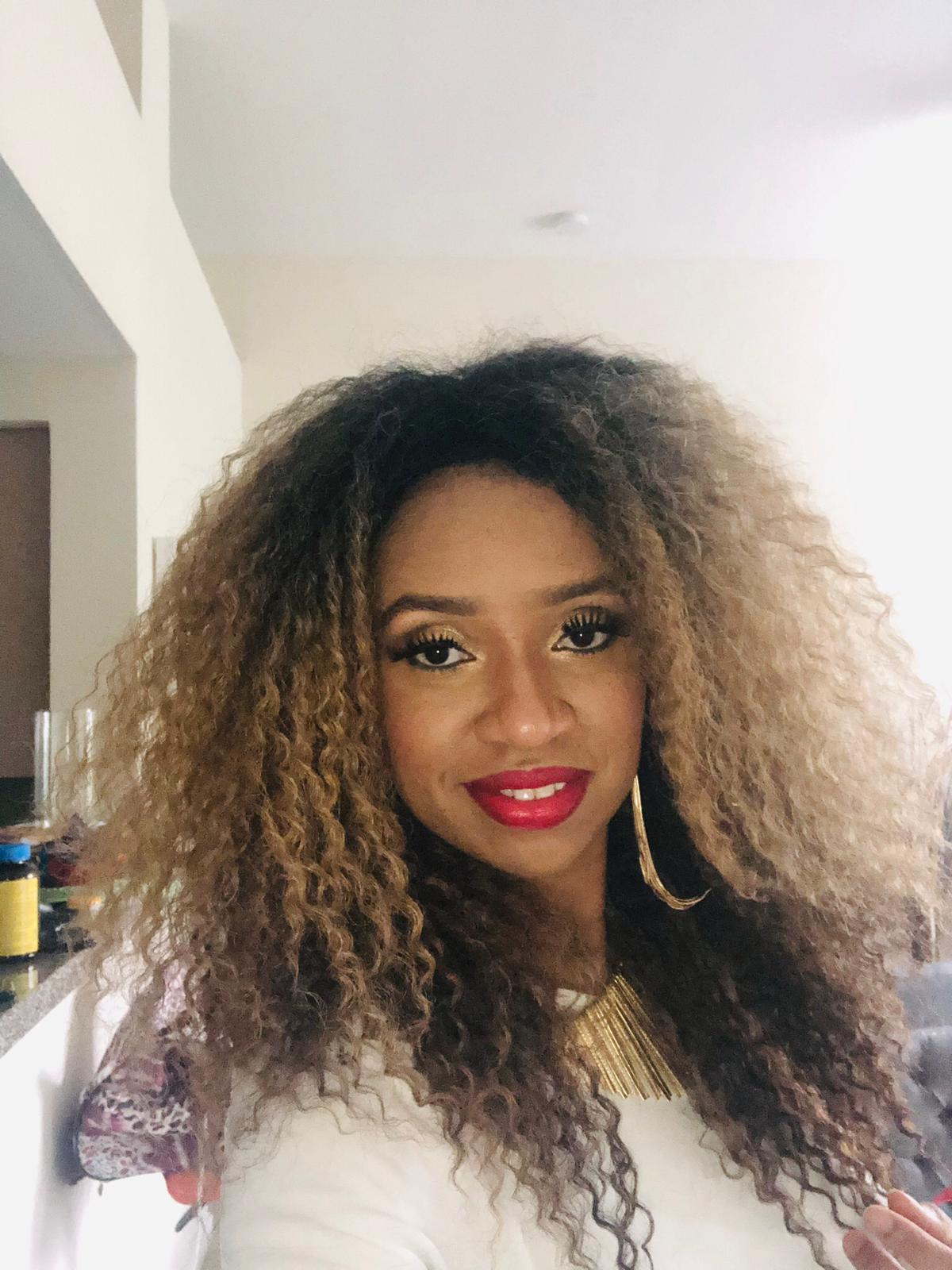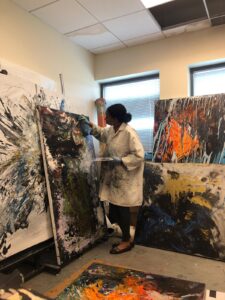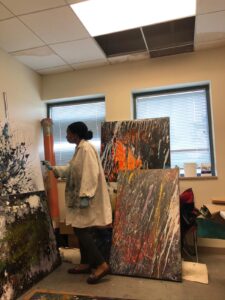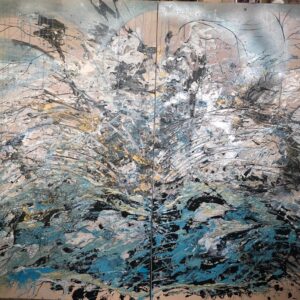PAINTER Esther Delaquis-Baidoo

I sometimes use Adinkra symbolism of Ghana, in both my paintings and prints though more obscure in my paintings.
My artistic philosophy is to apply outmoded African traditional art forms into a modern context by creating a visual synthesis that would have a universal aesthetic appeal despite an inherent pessimistic mood due to human conditions in the world.
I meld the influences of my Ghanaian background with my experiences as an immigrant in my new home in America, resulting in paintings that explode with overlays of colors, with an unabashedly spontaneous application of paint that is uniquely diverse and original.
My prints tend to be more representational though I still have abstractions in my monotypes. “This isn’t Walmart” is a print that attempts to show me navigating through two cultures. My experience as a mother, wife, and artist has influenced my recent pieces to include my daily role in my work. “Hair day” is one of my most popular prints. It’s a relief print executed in Linocut and Chine Colle. It shows me braiding my daughter’s hair, a popular activity for most black mothers.
I sometimes use Adinkra symbolism of Ghana, in both my paintings and prints though more obscure in my paintings. These symbols are a form of language, as each has a distinct meaning, and they communicate without the need for speech. They are very popular in Ghanaian textiles. I am drawn to the female Adinkra symbols such as Duafe (wooden comb), which symbolizes beauty and cleanliness, Akokonan (hen feet) symbol of mercy and nurturing, Fafanto (Butterfly); a symbol of gentleness, tenderness, fragility.
I distort these symbols in my work by incorporating my voice to make them more personal to me and give my viewers the freedom to interpret these abstractions in their own way, thus becoming more open to diverse meanings allowing audiences of any caliber to engage with them.




